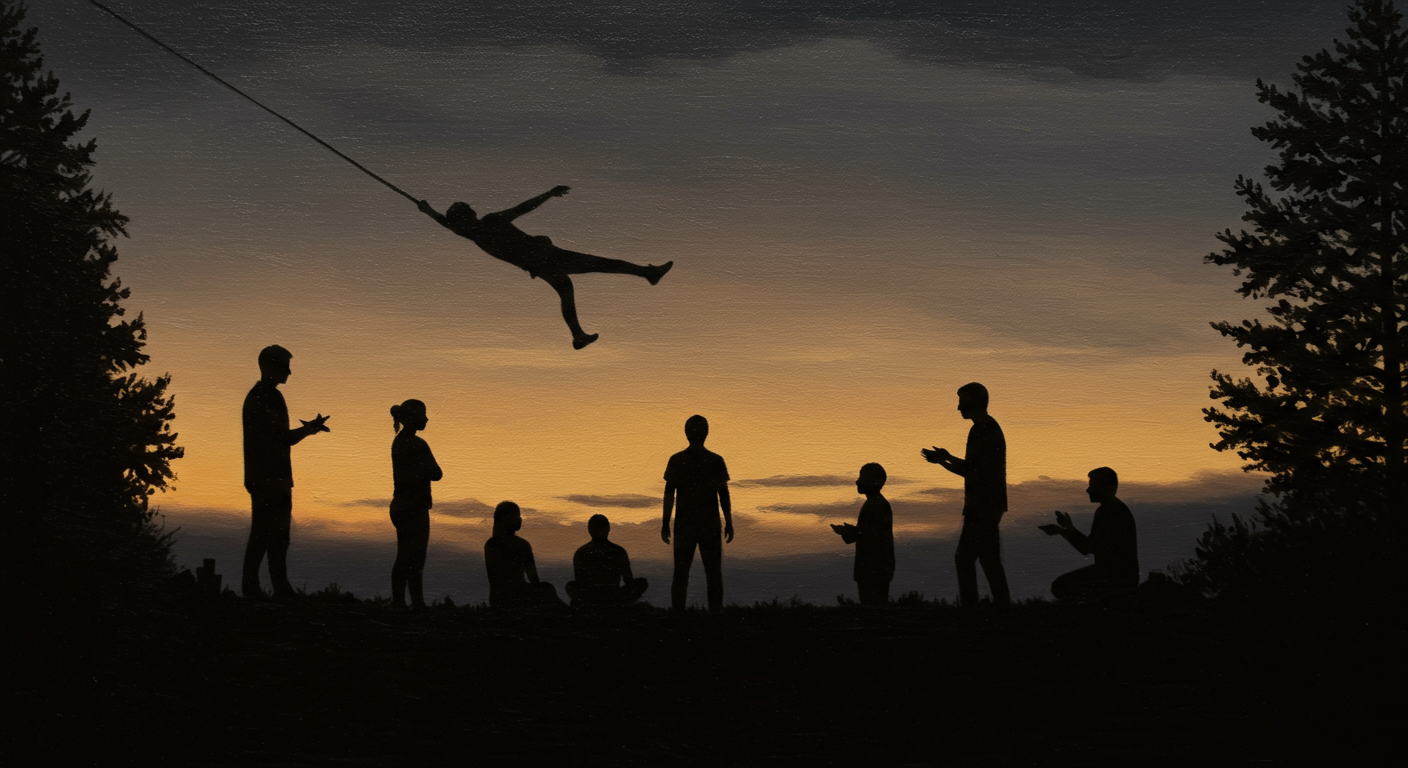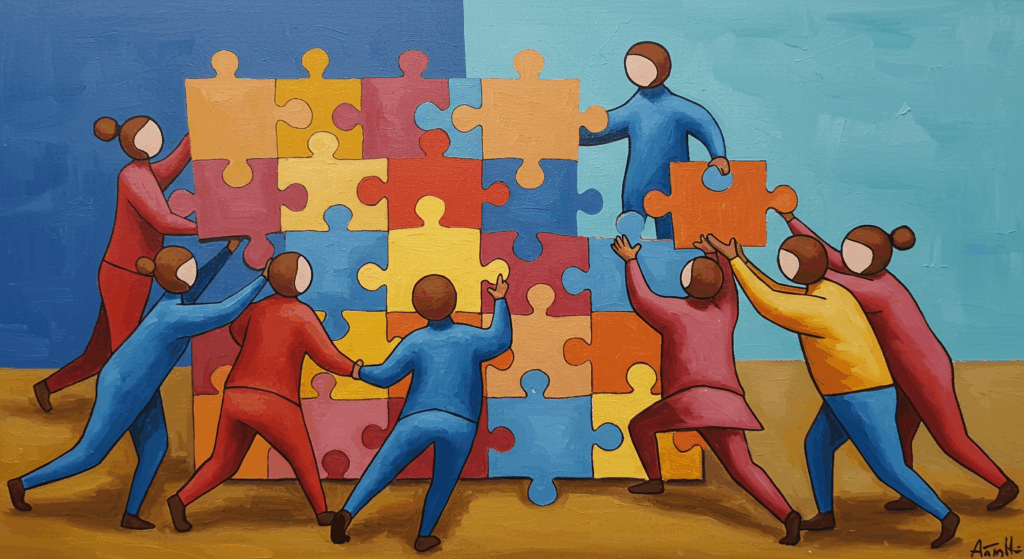If you’ve ever been dragged into a “fun” activity that felt more like a forced family photo—yeah, same. Team building gets a bad rep because, honestly, a lot of it is cringe: awkward name games, fake smiles, and weird competitive energy. But when you do it right? It’s actually powerful. The vibe shifts, projects move faster, folks speak up, and little communication gremlins stop ruining your deadlines. This post is your no-fluff, real-talk guide to team building exercises in the workplace—what actually works, what to skip, and how to make it feel natural (not like a corporate trust cult). We’ll talk about quick wins, deeper activities, remote options, and yes, the infamous trust falls (and whether they still matter in 2025). Grab a coffee or, idk, a bubble tea, and let’s fix team building together.
Why Team Building Still Matters (Even If You Roll Your Eyes)
Here’s the deal: teams aren’t just a bunch of people with Slack logins and matching email signatures. They’re moving ecosystems. And when people don’t understand each other’s styles—how they prefer to give feedback, how they solve problems, what energizes them—small frictions turn into big delays.
The right team building exercises can:
- Build psychological safety so people actually share ideas (and bad news) early.
- Create shared language around goals, not just vibes.
- Reduce the “who owns what?” confusion that silently eats your calendar.
- Make cross-functional work less like herding cats and more like, well, a smooth playlist.
If you’ve ever sat in a meeting thinking, “This could’ve been an email,” team building is how you transform that energy into, “Oh wait, we’re actually aligned now.”
What “Good” Team Building Looks Like
Think of this like Spotify playlists. You don’t play your gym bangers at a cozy dinner party, right? Same with team building: different goals need different exercises. A good session is:
- Purposeful: tied to a goal (communication, strategy, onboarding, conflict repair).
- Inclusive: considers energy levels, accessibility, culture, and time zones.
- Scoped: 15 minutes for a warm-up? Great. Half-day for deep work? Also great. Just don’t mash everything together into one chaotic mega-event.
- Actionable: you leave with decisions, norms, or next steps—not just “fun memories.”
The Spicy Question: Are Trust Falls Still a Thing?
Short answer: ehhh, kinda. “Trust falls” are iconic, but they’re also symbolic of team building gone wrong—big gestures, low relevance. If your goal is bonding, you don’t need to catch Becky off a box. You need consistent, low-risk reps of showing up for each other. That said, if your crew genuinely loves physical challenges and you’ve got proper safety and consent, go for it. But most teams will get more value from activities where trust is built through shared problem-solving, group discussions, and real work simulations.
Quick Wins You Can Run This Week
Sometimes you just need something short, sweet, and not embarrassing.
The “One Word Check-In”
- Time: 5–10 minutes
- What: Everyone shares one word about how they’re arriving (e.g., “curious,” “stressed,” “meh”). Optional: one sentence why.
- Why it works: Calibrates emotional bandwidth. If half the team is low-energy, you adjust expectations early. Ngl, it saves meetings.
Two Truths and a Work Lie
- Time: 10 minutes
- What: Each person shares two true work facts and one lie (e.g., “I used to manage 20 interns”).
- Why it works: Light fun, reveals surprising strengths, builds rapport without oversharing.
Mini Win Parade
- Time: 10 minutes
- What: Everyone shouts out a teammate for something specific they did last week.
- Why it works: Reinforces behaviors you want more of and creates tiny moments of trust—no trust falls required.
Communication Boosters That Actually Move Projects
If you’ve ever seen a thread spiral into chaos, this section’s for you.
Role Mapping Speed Round
- Time: 20–30 minutes
- What: On a whiteboard (or FigJam), list core responsibilities and who owns them. Clarify “consulted vs informed” for each.
- Why it works: Smashes the “I thought you had it” gremlin.
“Teach Me Like I’m New”
- Time: 20 minutes
- What: Each person explains part of the team’s process like they’re onboarding someone new.
- Why it works: Reveals gaps and assumptions quickly. Great for hybrid teams.
Group Discussions That Don’t Waste Time
- Time: 25 minutes
- What: Pick one gnarly topic (e.g., “Why do we miss handoffs?”). Use a round-robin to ensure everyone speaks once before open debate.
- Why it works: Structured group discussions equal more voices and fewer loud-person monologues.
Problem-Solving Games (Without the Corniness)
These are team building exercises that feel close to real work—so the improvements stick.
5 Whys + Fix
- Time: 30–40 minutes
- What: Pick a recent bug or miss. Ask “why?” five times to reach the root cause. Then brainstorm one small fix you can implement by next week.
- Why it works: You’re not just bonding; you’re improving systems together.
Constraints Challenge
- Time: 45 minutes
- What: Split into pairs. Give a problem (launch a feature), then add a constraint (48 hours, $0 budget, one person out). Pitch solutions.
- Why it works: Builds creative resilience and stress-tested collaboration.
Silent Retro (Yes, It’s a Thing)
- Time: 30 minutes
- What: Everyone writes “Start/Stop/Continue” notes silently for five minutes, then clusters themes on a board before talking.
- Why it works: Introvert-friendly, reduces groupthink.
Creativity and Innovation (Without a Post-It Explosion)
Creativity isn’t just for designers. Ops, finance, support—everyone can spark better ideas.
Bad Ideas First
- Time: 20 minutes
- What: Generate intentionally bad solutions for five minutes, then flip them into good ones.
- Why it works: Lowers fear, raises originality.
Mash-Up Method
- Time: 30 minutes
- What: Combine two unrelated things (e.g., “ticketing system x Spotify Discover Weekly”) and ideate.
- Why it works: Forces novel connections, you know, like dating app algorithms but for bugs.
Team Workshops for Innovation (Lightweight Edition)
- Time: 60–90 minutes
- What: Plan a mini team workshop: kickoff, divergent thinking, convergent sorting, decision + owner.
- Why it works: Clear structure equals better outcomes. Keep it lean, not a marathon.
Trust, But Make It Practical
You don’t need epic trust falls to build trust. You need small, consistent behaviors.
Task Transparency
- Time: 15 minutes weekly
- What: Everyone lists one priority and one risk for the week.
- Why it works: Creates accountability and early flags, no hero syndrome.
Speed Mentoring
- Time: 30–45 minutes
- What: Rotating 5-minute 1:1s to share one skill you can teach or need help with.
- Why it works: Builds real interdependence, not performative trust.
Feedback Fishbowl (Respectfully)
- Time: 40 minutes
- What: One person describes a recent challenge. Others ask curious questions only (no advice for 10 minutes). Then they can offer advice.
- Why it works: Models listening first, talking second—a core trust builder.
Remote and Hybrid-Friendly Options (Zoom Doesn’t Have to Be Pain)
Remote teams can absolutely bond without calendar Tetris chaos.
Desk Show-And-Tell
- Time: 10 minutes
- What: Share one object on your desk with a story.
- Why it works: Low stakes, high connection, camera-on optional.
Async Voice Threads
- Time: 15 minutes async
- What: Record 60-second updates via Loom or voice notes. Others react with emojis or short replies.
- Why it works: Cuts meeting load while keeping context intact.
Remote Group Discussions with Guardrails
- Time: 30 minutes
- What: Pre-share the prompt and ask everyone to bring one example or question. Use a queue bot or hand-raise feature.
- Why it works: Smooths dominance dynamics on video.
Outdoor or Active Ideas (For Teams Who Want Movement)
Okay, not every team wants to sweat together. But for those who do:
Micro Urban Quest
- Time: 60 minutes
- What: Small scavenger hunt around the office neighborhood (or office building). Tasks: find a landmark, replicate a meme pose, collect a fun fact from a stranger (opt-in only).
- Why it works: Fun, energizing, and the photos are gold for team memories.
Cooperative Build
- Time: 45 minutes
- What: Build a simple thing together (tower, LEGO solution, tiny bot with a kit).
- Why it works: Tangible collaboration. No trust falls, just shared creation.
How to Facilitate Group Discussions Like a Pro
A lot of team building fails in the facilitation. Here’s your cheat sheet:
- State the goal: “We’re here to choose three priorities, not solve everything.”
- Set norms: No interruptions, cameras optional, one mic rule, assume good intent.
- Use rounds: Everybody speaks once before second takes.
- Timebox: Put durations on the screen. People focus better when the end is visible.
- Park lot: Off-topic? Great point—capture it for later.
- Close with owners: Decision + owner + date. Always.
Designing Team Workshops People Don’t Dread
Let’s talk deeper sessions—actual team workshops that change things.
Team Workshops: The 4-Block Format
- Block 1 — Align (20 min): Clear outcomes. What will be true when we’re done?
- Block 2 — Diverge (30 min): Silent ideation or small breakout brainstorms.
- Block 3 — Converge (30 min): Dot-vote, sort by impact/effort, pick top 3.
- Block 4 — Commit (20 min): Owners, timelines, first next step within 48 hours.
Tips:
- Keep slides minimal; use a shared board.
- Mix voices: pair a senior with a junior in breakouts.
- Provide snacks. Yes, snacks matter.
Team Workshops That Rebuild Trust (Without Trust Falls)
- Story Exchange: Partners share a work story where they felt stuck; the other person retells it back. Builds empathy.
- Values In Action: Team picks top 3 values (clarity, speed, craft). For each, list behaviors that show it—and behaviors that kill it. Choose one behavior to start/stop this week.
- Red Team / Blue Team: One group proposes a plan; the other tries to break it respectfully. Then switch.
Inclusivity, Accessibility, and Real Psychological Safety
Look, not everyone loves improv or standing up in front of a room. Make it safe and accessible.
- Offer opt-in layers: people can observe, contribute via chat, or speak.
- Provide advance prompts for neurodivergent teammates who prefer processing time.
- Make time zones a design constraint, not an afterthought. Rotate meeting-friendly slots.
- Avoid activities that force physical contact. Even “light” trust falls can be a hard no for some.
- Celebrate small wins publicly; give critical feedback privately and kindly.
Measuring Impact (Because Feelings ≠ Data)
Team building is not just vibes. Track it like you track product metrics.
- Pulse Survey (3 questions, monthly):
- I feel safe sharing concerns on this team. (1–5)
- I understand who owns what. (1–5)
- Our meetings help us move faster. (1–5)
- Lagging Indicators: cycle time, bug reopen rate, project slip frequency, support escalations.
- Leading Indicators: PR review turnaround, cross-team pairing frequency, meeting no-shows (down is good).
Pro tip: Don’t chase perfection; chase trend lines. If scores tick up over 6–8 weeks, keep going.
Common Mistakes (Please Avoid, for Everyone’s Sake)
- One-and-done energy: A single offsite won’t fix chronic clarity problems.
- Cringe overload: Activities that ignore culture, accessibility, or consent.
- Too theoretical: If it doesn’t connect to current work, people tune out.
- No follow-through: The fastest way to kill trust is promising change and ghosting it. We’ve all seen it.
Sample Half-Day Plan You Can Steal
Want a balanced session? Try this four-step, zero-cringe layout.
- Warm-Up (15 min) — One Word Check-In + Mini Win Parade.
- Clarity Sprint (45 min) — Role Mapping + decision on 3 key owners.
- Problem-Solve (60 min) — 5 Whys + Constraints Challenge (choose one).
- Group Discussions (30 min) — One focused debate with round-robin.
- Commit (20 min) — Owners, deadlines, first next steps within 48 hours.
If you’re remote, keep breaks frequent (every 50 minutes) and record outcomes in a shared doc.
Real Examples by Team Type
Product & Engineering
- Bug Court: Review a gnarly bug, do 5 Whys, choose one system fix. Track time-to-resolution next sprint.
- API Story Swap: Devs and PMs explain features from each other’s POV for five minutes. Builds empathy, less finger-pointing.
Marketing & Sales
- Message Karaoke: Randomly pair and pitch the product to an unexpected audience (college students, CFOs, plant parents). Hilarious and useful.
- Deal Post-Mortem: Cross-functional review of a won and lost deal. What signals did we miss? What messaging landed?
Ops, Support, and Finance
- Fire Drill: Simulate a live incident (system down, vendor fails) with a tight timebox. Assign incident commander, comms lead, executor.
- Efficiency Draft: Everyone picks one recurring task to automate and commits to shipping a proof-of-concept in two weeks.
Using Trust Falls, Group Discussions, and Team Workshops Intentionally
Let’s land the plane on the three big keywords people toss around:
When to Use Trust Falls
- Use sparingly, if at all. They’re best with teams who already enjoy physical challenges and where consent is crystal clear. They should support—not replace—ongoing trusts behaviors like transparency and feedback. For most teams, skip the trust falls and choose collaborative builds or problem-solving sprints.
How to Make Group Discussions Work
- Keep them small (5–8 people), use round-robins, and end with owners. If your group discussions don’t produce decisions, they’re just vibes with extra steps.
Designing Team Workshops That Stick
- Anchor team workshops to a decision or deliverable. Use the 4-Block Format, assign owners, and schedule a check-in two weeks later. Workshops are the gym; shipping is the sport.
Frequently Asked (Actually Good) Questions
“What if my team is burned out and cranky?”
Start super small: 10-minute check-ins, async voice notes, one tiny process fix per week. Respect bandwidth. Win trust with consistent action, not big speeches.
“My team has conflict. Do we still do fun stuff?”
Yes, but carefully. Skip competitive games and high-energy activities. Choose listening-heavy sessions (Feedback Fishbowl, Values In Action). Consider a neutral facilitator if it’s spicy.
“How often should we do this?”
- Micro rituals weekly (check-ins, win parades).
- One focused group discussion every two weeks.
- One 60–90 minute team workshop monthly or per milestone.
- A bigger reset or retrospective quarterly.
“How do we make it not awkward?”
Explain the ‘why,’ make participation flexible, keep it short at first, and always close with a clear ‘what changes next.’ Also… snacks. Again: snacks matter.
A Lightweight Toolkit You Can Copy
- Template — One Word Check-In: “One word for how you’re arriving + one sentence why (optional).”
- Template — Start/Stop/Continue: Three columns in a shared doc. Five minutes silent fill, then cluster, vote, assign.
- Template — Impact/Effort Matrix: Quadrants: Quick Wins, Big Bets, Fill-Ins, Avoid. Put sticky notes in, pick top three.
- Norms Menu: Cameras optional, no meeting Fridays, async first drafts, single source of truth, owner on every task.
- Follow-Through: Post a screenshot of decisions within 24 hours. Add owners + dates to the tracker. Celebrate first next step publicly.
Pit Stops for Leaders (or Anyone Facilitating)
- Model the behavior you want: brevity, curiosity, and kindness.
- Ask more questions than you answer.
- Share your own miss sometimes (“I dropped the ball last sprint, here’s how I’m fixing it”). That’s a trust deposit bigger than any trust falls exercise.
- Protect timeboxes. It’s a kindness, not a rigidity thing.
Bringing It All Together
Real talk: team bulding isn’t about the perfect activity—it’s about consistent, human moments that make work smoother and more meaningful. Use quick rituals to stay connected, structured group discussions to make decisions, and focused team workshops to unlock bigger shifts. Choose exercises that match your goals and your team’s energy, keep it inclusive, and always land on clear owners and next steps. Do that weekly, and you’ll feel the difference—less friction, faster delivery, and a team that actually likes working together (wild concept, I know).
Friendly Wrap-Up
If your team building playbook has been “shrug emoji and hope for the best,” consider this your sign to try one new thing this week. No need to stage dramatic trust falls or rent a ropes course—start with a 10-minute check-in, a tidy role map, or a simple team workshop to unblock a real problem. Then watch how those tiny changes compound.
You’ve got this. Pick one exercise from above, put it on the calendar, and tell your team why it matters. And hey—if it feels a little awkward at first? That’s normal. Keep it human, keep it kind, and keep going. Now go build a team that ships great work and laughs in the process.









